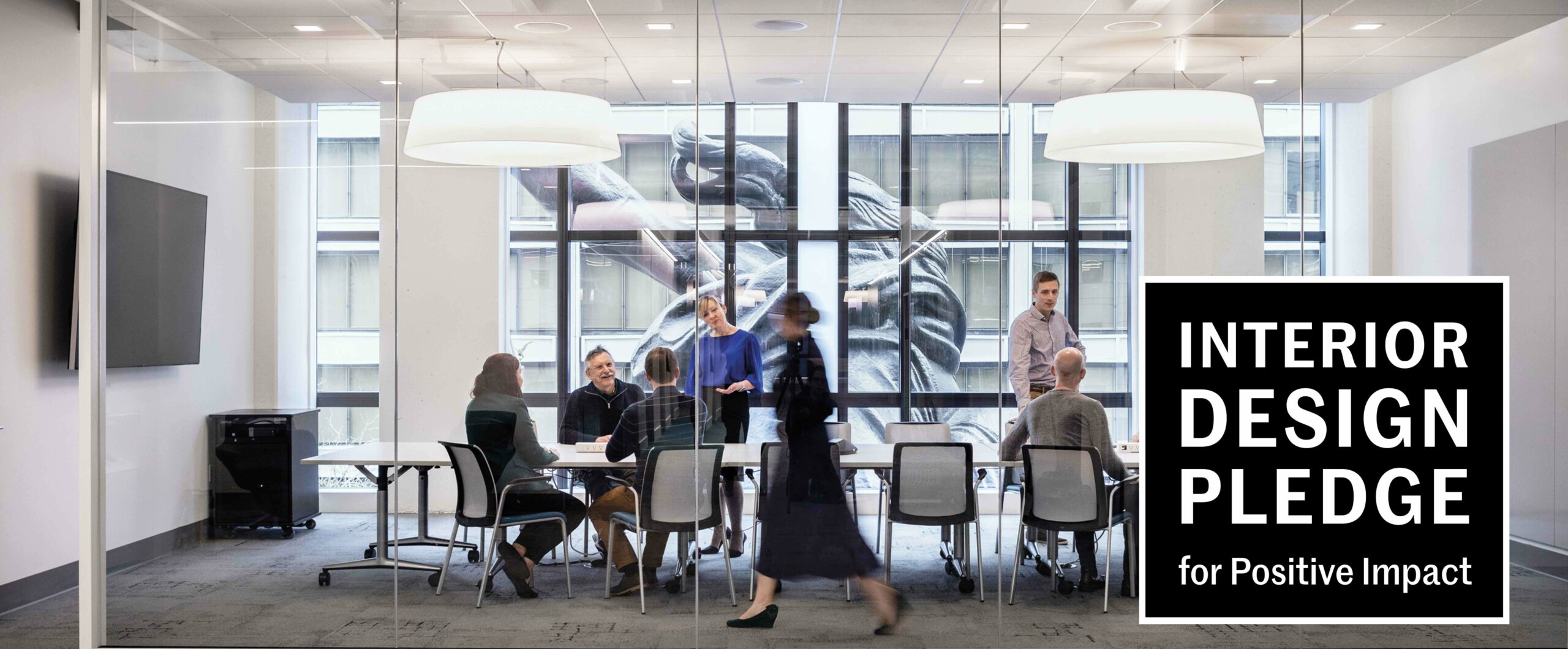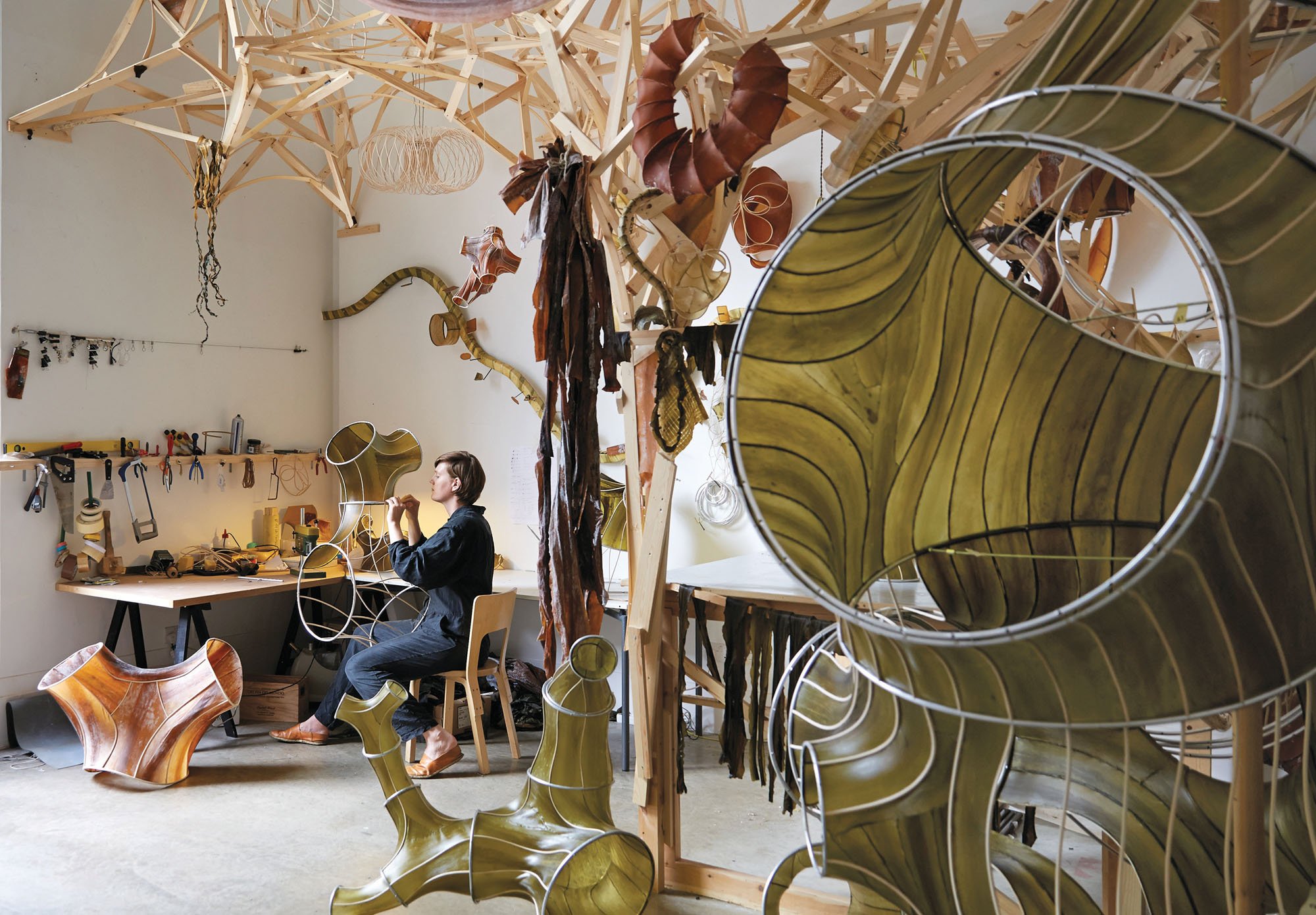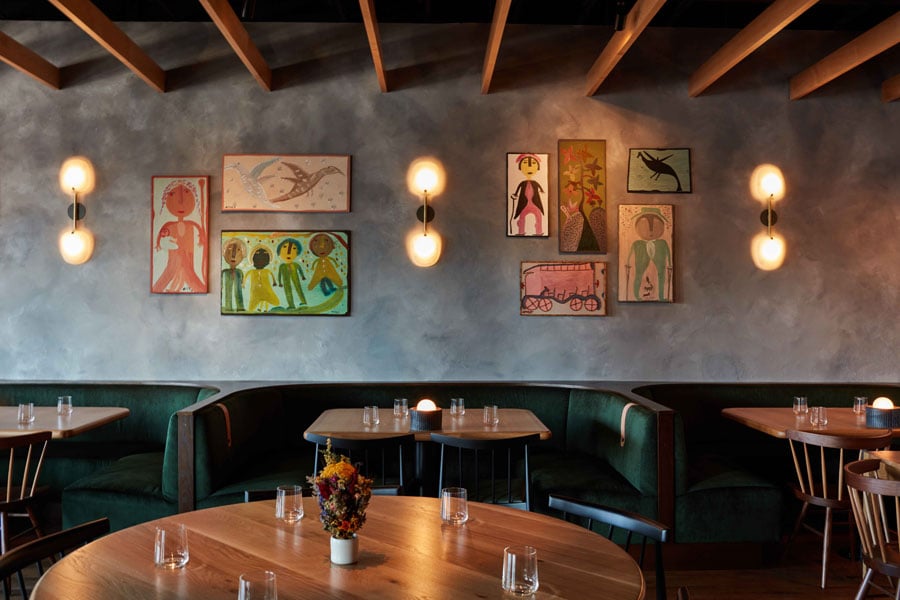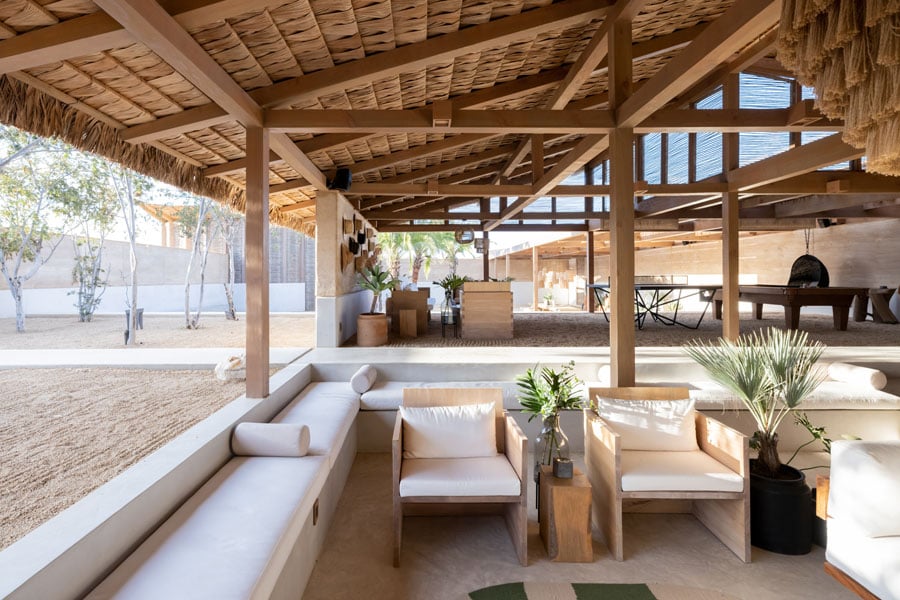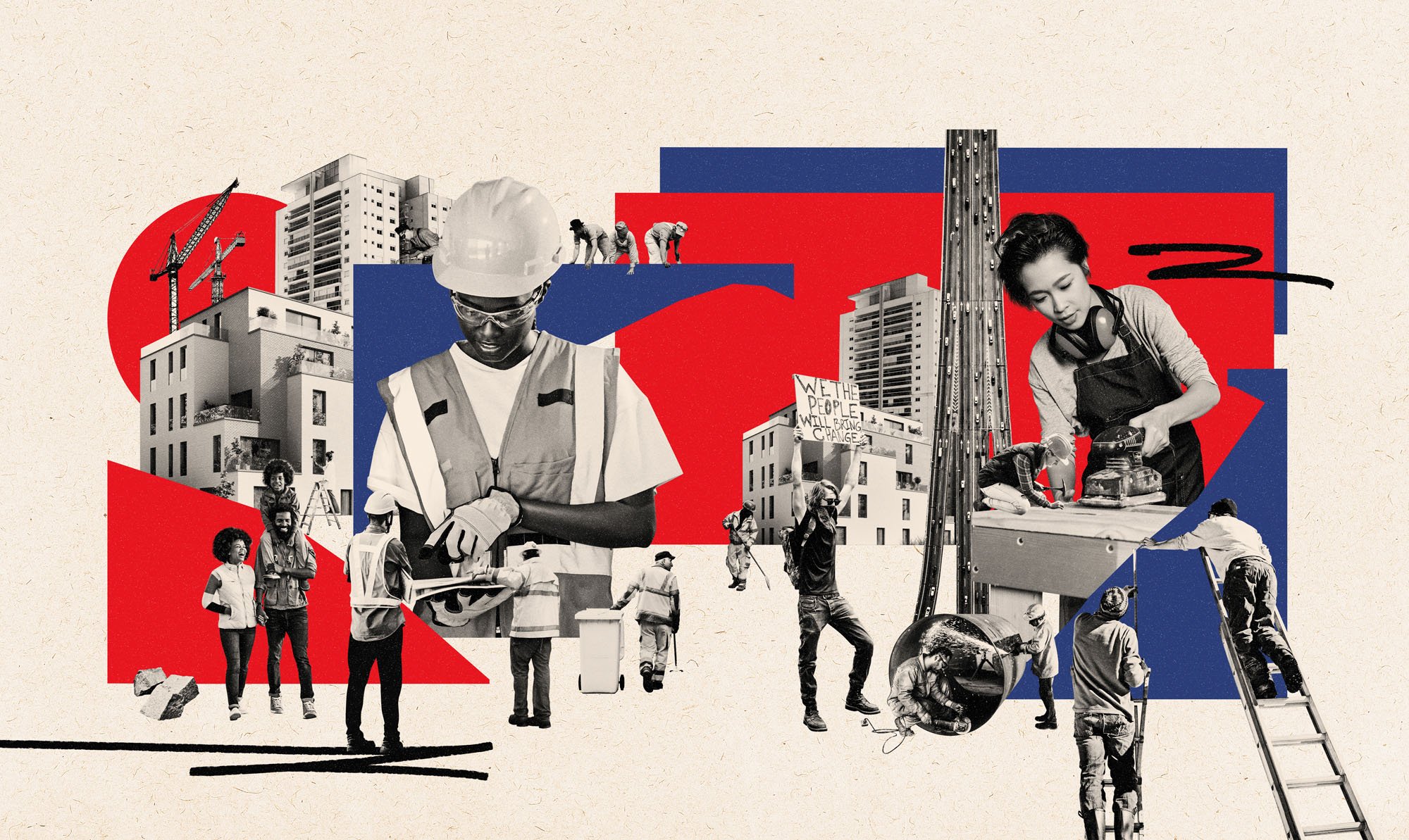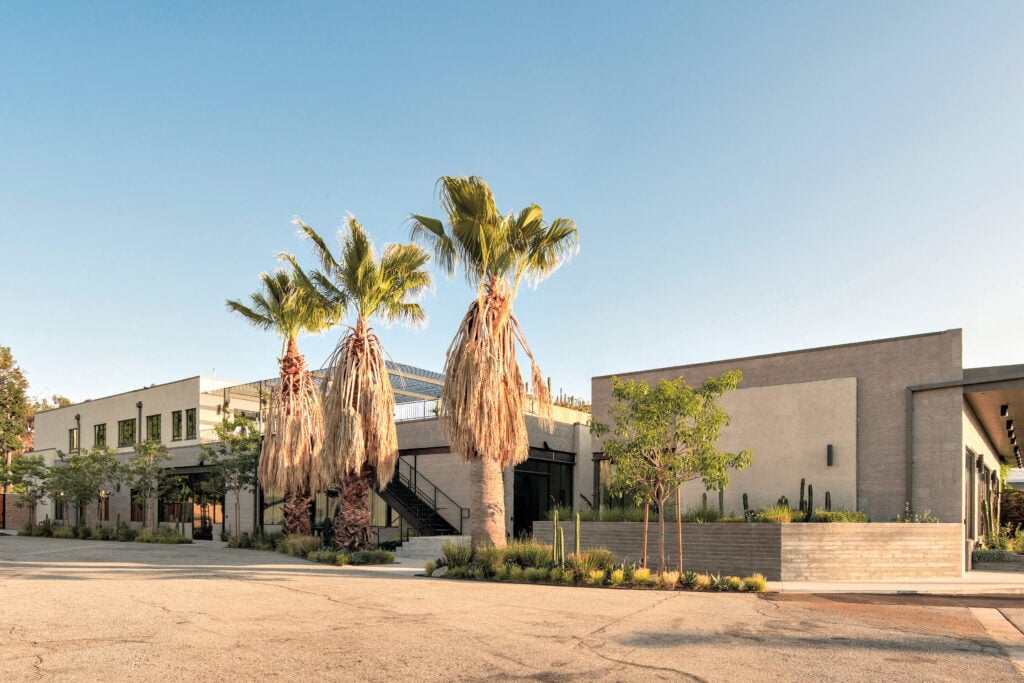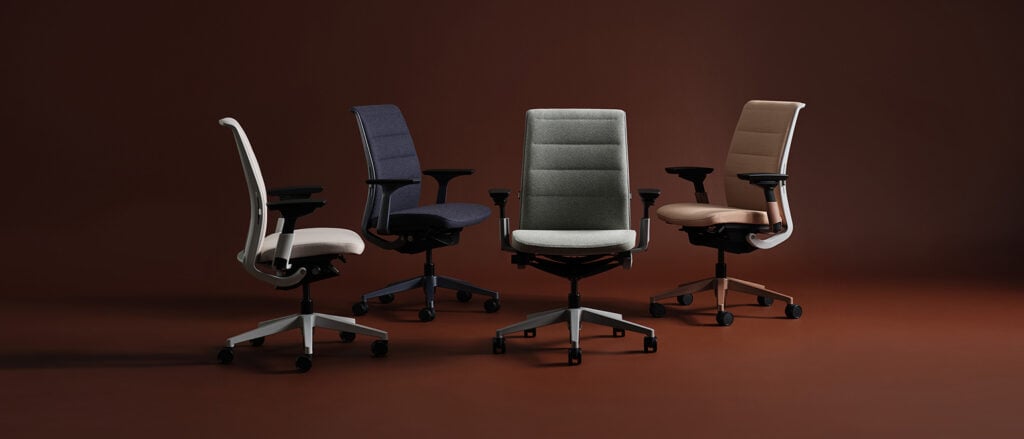
January 7, 2022
Architecture and Design Has a Different Supply Chain Issue—2022 Might be the Year to Tackle It
Architecture and design practice today has an occupant problem. For years, we have considered it a virtue to intently focus our energy on the health, needs, and desires of the people who occupy our buildings and interiors. But this approach has two drawbacks: One, who the “occupants” are is usually defined by clients who tend to be more concerned with customers than employees or else prioritize needs in descending order of corporate hierarchy. Two, by zeroing in on occupants, we forget that every building or interior touches innumerable lives along its supply chain, from miners who pull raw materials out of the bowels of the earth to the communities who live near the landfills where our building materials eventually end up.
As Metropolis digital editor Ethan Tucker urges in his cover story, “A New Concept for Good Architecture: Embodied Justice,” we must dig deeper if we truly want to design and build equitably.
Tucker proposes that just as each product or material used in a building represents a certain amount of embodied carbon emissions, it also has a particular level of embodied justice. He asks: “Can we tally up the impact—positive and negative—on the human beings and communities their creation has touched?”
As our industry starts to measure and reckon with that profound impact, information is already coming to light that some conventional materials and systems are harmful to people and the planet. Fortunately, there are efforts underway to find alternatives that sequester carbon, support human health and dignity of life, and minimize our negative impact on the earth’s ecosystems.
At the Parsons Healthy Materials Lab (“The Healthy Materials Lab is Redefining Sustainable Design”), for example, Alison Mears, Jonsara Ruth, and their team are researching better options for architects and designers, creating guides on materials to encourage shifts in the marketplace, and training designers on healthy specification. In “In Three Buildings Around the World, Old Methods Find New Purpose” we showcase developments in mass timber, hempcrete, and natural ventilation that will help scale up the building industry’s efforts to decarbonize. As this year draws to a close, even as we acknowledge the enormous task ahead in design for climate, health, and equity, there is much to be optimistic about.
2021 has been a landmark year for Metropolis’s own advocacy, with our Interior Design Pledge for Positive Impact, our Climate Toolkit for Interior Design, our Sustainability Lab at NeoCon, and our Perspective: Sustainability Symposia. We end this year with yet another milestone: all carbon emissions associated with the print copy of the issue you are reading have been offset with verified carbon credits, as part of a year-long partnership with Keilhauer. Looking ahead, Metropolis is beginning a process of third-party assessment, and aggressively reducing its footprint to get to carbon-neutral production by 2025.
We are proud to work shoulder-to-shoulder with the A&D industry toward a better future for us all.
Would you like to comment on this article? Send your thoughts to: [email protected]
- No tags selected
Latest
Profiles
Breland–Harper Mines the Past to Design a Better Future
In less than a decade, Ireland-Harper, the Los Angeles–based studio has completed over 100 adaptive reuse projects.
Products
How the Furniture Industry is Stepping Up on Circularity
Responding to new studies on the environmental impact of furniture, manufacturers, dealers, and start-ups are accelerating their carbon and circularity initiatives.
Viewpoints
The 2024 Net Zero Conference Highlights the Importance of Collective Action
Last month, leading climate experts convened at the Anaheim Convention Center to reenvision the built environment for a net zero future.



